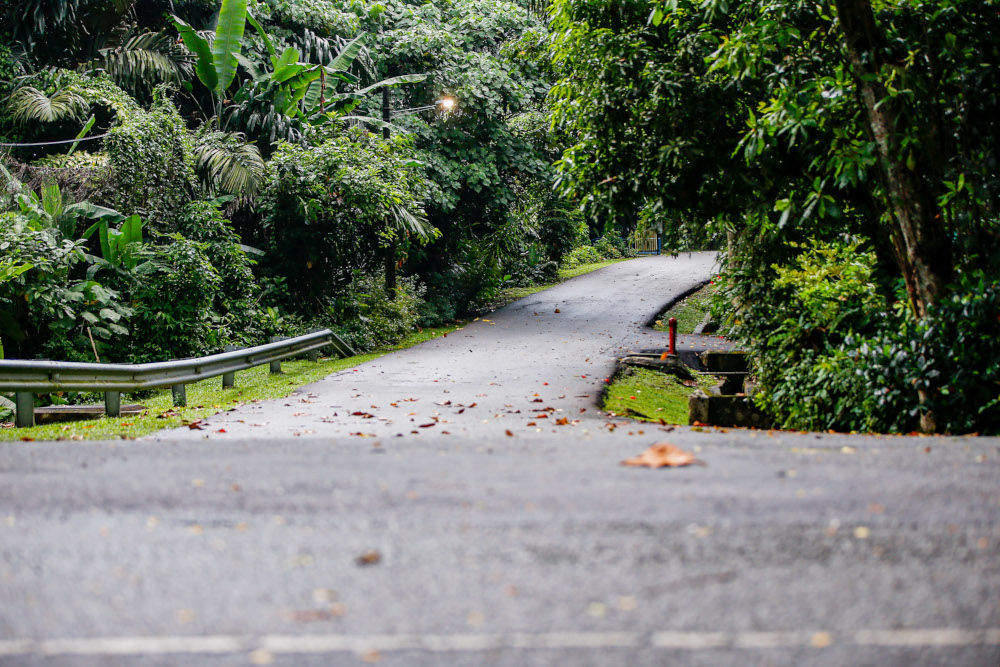KUALA LUMPUR, Oct 26 ― Even as concerned Kuala Lumpur residents continue to push for the authorities to preserve Bukit Persekutuan, KL Mayor Datuk Seri Mahadi Che Ngha has clarified City Hall's position on the matter.
Mahadi said the residents as well as environmentalists and other pressure groups who have been fighting for this cause need to understand that the area previously called Federal Hill is not government land and that it belongs to the federal government as private land.
“We are aware of the concerns, people need to understand that this is someone's land. It's like how people want my house to be gazetted as a green lung, how can that be?
“You cannot just gazette it and we have laws for this. If we want to do it, we have to acquire the land and be ready to pay compensation,” Mahadi explained during an interview with Malay Mail earlier this month.
Kuala Lumpur City Hall’s (DBKL) infrastructure planning department director Datuk Zulkurnain Hassan said the land in Bukit Persekutuan is all considered as private land ― titled land.
“These are land under the Federal Land Commissioner, they are privately owned and it isn't the same as government land.
“If we are talking about government land, those parks gazetted as open space, those are government land.
“We have to be clear about this. If someone tries to rezone the parks, then we will take it up with them,” he added.
In 2008, Malaysian Nature Society (MNS) and Badan Warisan Malaysia raised their concern about the possibility of development overtaking the natural and historical heritage of Bukit Persekutuan.
While there were no development proposals for the area back then, MNS had noticed that the land was not protected.
As reported in the news, former MNS president Tan Sri Salleh Mohd Nor said DBKL was responsible for the administration and maintenance of the buildings and surroundings on the hill.
Both MNS and Badan Warisan Malaysia had then submitted a proposal to the government to turn the 70-hectare Bukit Persekutuan into an urban park and also a site for the Natural History Museum of Malaysia.
Calls to gazette Bukit Persekutuan grew as more residents in the area learned that there were plans for a mega development project, and that it will be located at the land parcel where the National Institutes of Health (NIH) was located.
The mega development project will also involve two plots of land located within Bukit Persekutuan, and this has caused even more anxiety to residents who live in the vicinity of the proposed projects.
Residents there have recently cited several incidents, including soil erosion and wildlife coming into their housing compound, as reasons for concern.
According to long-time resident T. Ksharmini, these incidents are likely caused by too much ground movement and had even led to a tree’s uprooting, while a wild snake was caught recently in one of her neighbour's home.
“We are not against development, but it has to be done sustainably.
“They talk about low density, but even the government quarters which the developer has completed in 2019 as part of the bigger proposed project is 12-storey high and is towering over our houses now,” she said.
She added that currently, as the NIH building is being demolished, she constantly feels vibrations with every knock that is made during the demolition process.
“I can't imagine what it will be like when they start doing piling work,” she said.
It was reported that in 2012, SP Setia Bhd acquired a parcel of land belonging to the NIH through a land swap deal.
The land parcel is connected to Bukit Persekutuan and adjoins Jalan Abdullah.
In return, SP Setia is to construct a new facility for the NIH in Setia Alam, the developer’s flagship township.
The land swap deal also included the construction of a 12-storey apartment building which will serve as government quarters and a mega commercial development on the former NIH land will likely include an 80-storey mixed commercial high-rise.
Cities change
Mahadi, however, said these developments are needed as Kuala Lumpur, just like any other capital city in the world, is the main focus of the country's economy and it will be where there is most development.
In other words, development in the city is inevitable to encourage a robust economy which invites more investors into the country.
“Why an area becomes a main focus of all the activities of the country is because it is the capital city of the country.
“So definitely it will be a main focus, otherwise Kuala Lumpur will not be known as the capital city of Malaysia,” he said.
Citing several examples of city development evolution, Mahadi said the Chan Sow Lin area in the city is a good example. It used to be an industrial area but today its identity has changed and is no longer suitable for industrial activities.
“Some have become residential areas while other residential areas like where the TRX is today, have turned into a commercial centre.
“In the 70s, that area was residential, but now it will be known as the International Islamic Financial Centre.
“So, things change, this is part of the process of city evolution,” he said.
As for the objections of the surrounding residents and environmental activists, Mahadi said these conflicts and disagreements are nothing new.
“But as the guardian of the city, this is part of the issues we have to address.
“I am confident that our officers in charge have gone through the necessary processes, because to work in City Hall, you need a basic qualification and a degree,” he said.



















